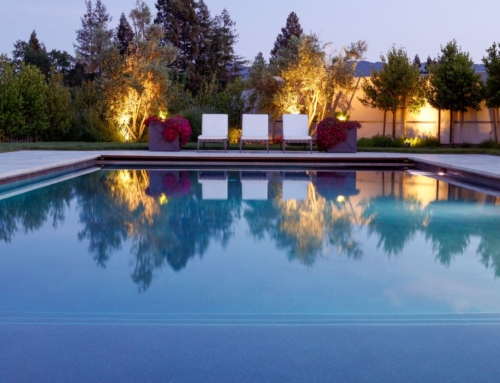Traditional Landscape Architecture
We like to think we’re at least sort of worldly, and so we realize that “Traditional” is kind of a misnomer. After all, designed landscapes have been created worldwide for millennia, and we acknowledge the influence of Egyptian, Greek, Moorish, Chinese, Japanese, and many other Landscape Traditions on our current practice as Landscape Architects. Compared to these, the style popularly referred to as “Traditional” in the United States is very recent, beginning in the 19th century on the East Coast. The trademarks of this style movement are still highly popular today with homeowners across the country, and since everyone calls it “Traditional,” we’re going to stick with it now that we’ve made ourselves clear!
History
The 1800’s saw a new appreciation for the landscape, as an increased interest in parks and open spaces also created a demand for more aesthetic and useful outdoor space. The belief that the outdoors and natural beauty were directly linked to human health made the landscape an important part of the home to inhabit, so of course the Architects quickly followed suit! Early American Colonial homes, with their old-world European influence, set the scene for the Traditional Architectural style, and the work of Landscape Architecture pioneers Frederick Law Olmstead, Frank Lloyd Wright, and Gertrude Jekyll, among others, influenced exquisite garden designs for private homes and public parks.
Craftsmanship
The detailed styles of Colonial and Victorian Architecture, and the Arts-and-Crafts movement that revived them, meant that craftsmanship was at its peak. Traditional carpentry is still a trademark element of this style, from arbors to balustrades to gazebos and porch swings. Today, combining fine carpentry details with wrought-iron fixtures and old-world lighting, as in the image above, can turn an entrance or a garden gate into a timeless statement. For free-standing landscape structures, matching trim or carpentry details on the house make the structure feel fully integrated, an extension of the home into the surrounding landscape. For modern Outdoor Living, these stylistic elements can be used for covered patio architecture and outdoor living rooms, blending classical with new with beautiful results.
Materials
Traditional hardscape materials also originate on the East Coast, with stone and Connecticut bluestone being timeless favorites. Brick and stone have infinite applications in the landscape. Paths and patios in herringbone, basket-weave, or running bond patterns, with walls and pillars to complement or support wooden structures, are perfectly suited to this style. Reclaimed brick already has the feeling and look of age, and is a unique way to give the Traditional landscape a more authentic feel. The image above combines reclaimed brick with bluestone (our trademark combination!) for a unique take on a seat wall that bridges the Traditional/Modern divide.
Planting
Traditional influence on the garden is also seen in planting design, and can go a few different ways. Boxwood hedges and symmetrical plantings, and a focus on long-celebrated flowers such as roses, comprise one facet of Traditional planting that hearkens back to European roots. On the other hand, park-like designs with lush plantings also fit the Traditional style in more of an Olmstead-designed Central Park kind of way. We love both styles, one mimicking and the other contrasting the formality of the architecture.
Since today’s homeowners don’t have the live-in gardeners needed to maintain the Traditional look, planting designers have a few tricks up our sleeves to make something look like a hedge without requiring constant shearing, or to create the feeling of a Traditional rose garden but with much hardier varieties of roses. Many plants that are considered Traditional are East-coast favorites, such as Hydrangeas, Viburnums, and Hosta, and all are thirsty, especially in our dry summers! While nothing can replace a stunning Hydrangea, we have substitutes for many Traditional garden plants that can help lower the overall water use of a landscape. So you can have all your favorites, but instead of water-guzzling hedges or trees, you can have look-alike Mediterranean toughies. Pretty cool, we think!
At Montgomery Robbins, we are well-known for our Traditional landscapes as well as our Contemporary and Modern ones. All images in this blog are our original designed sites! If you like what you see and would like to talk design, contact our office for consultation for our 2023 season!











